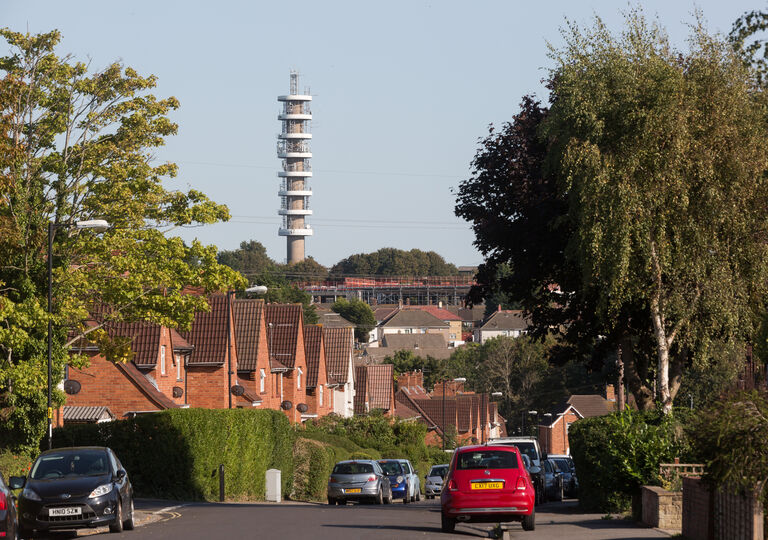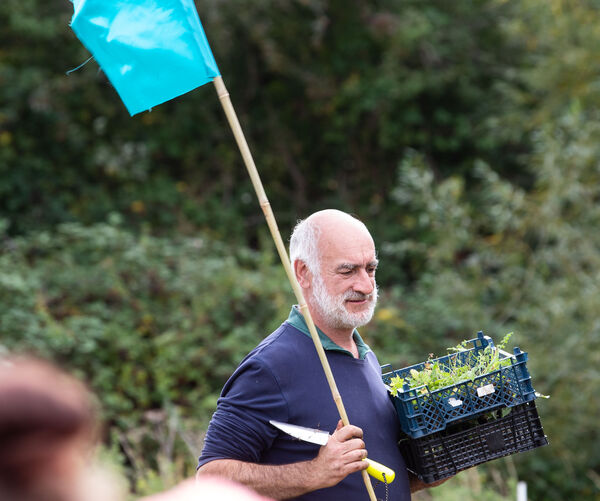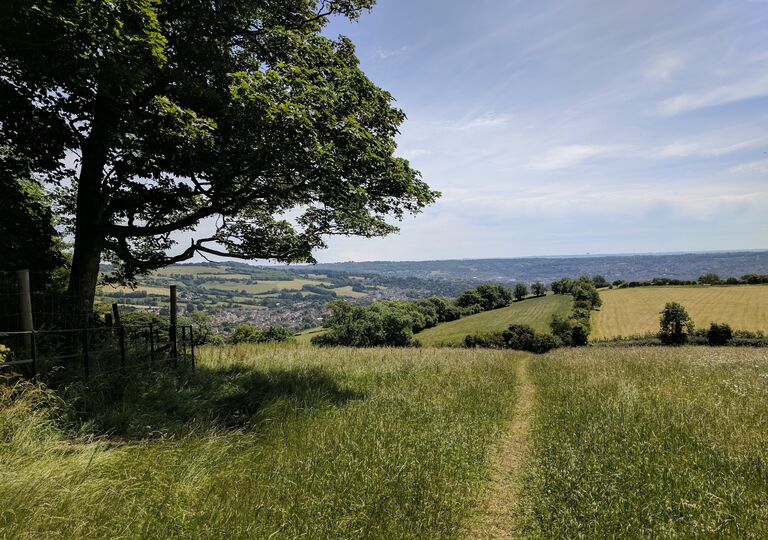
The impact of climate change on the West of England
Climate change is a global issue that has local impacts. This simple guide explores how climate change is affecting the West of England, from shifting weather patterns and rising sea levels to the increased frequency of extreme weather events. It delves into the specific challenges faced by different communities within the region, the projected future climate scenarios, and the actions that can be taken to build resilience. This guide serves as a valuable resource for understanding the multifaceted impacts of climate change on the West of England and the steps towards adaptation.
How is climate change impacting the local climate?
The West of England is already experiencing the impact of climate change.
Many residents now have first-hand experience of how the weather and seasons are changing. The changing climate is causing shifting patterns in rainfall and temperature. This is bringing hotter, drier summers and milder, wetter winters. Extreme weather events are also increasing causing flooding, heatwaves, drought, and storms. Sea levels are also rising as the planet warms, causing the expansion of the oceans and the melting of ice sheets.
- All areas of the UK will be warmer by the end of the century.
- Increased chance of warmer, wetter winters
- Increased chance of hotter, drier summers
- Increases in frequency, intensity, and duration of extreme weather events
- Hotter summers will become more common
- Increases in the frequency of hot summer days and heatwaves
- Drier summers and wetter winters will become more common
- Increases in the intensity of heavy summer rainfall events
- More intense short downpours
- Increases in winter rainfall
- Increases to extreme coastal water levels (mostly due to sea level rise)
- Possible changes to storm surges
Decreases in soil moisture during summers
- Almost no snow on the ground by the end of the century
How is climate change impacting West of England communities?
The impacts of climate change can sometimes be very visible through disruption caused by flooding to railway lines or major roads. Other impacts can be harder to see with heatwaves causing sleepless nights and lower productivity at work.
The West of England is home to many different communities who are all facing the negative impacts that climate change will inevitably bring. There will be common challenges but also differences in how these impacts play out across our region. From inner-city areas, to coastal communities and more rural villages, all of the region faces risks.
Many factors combine and influence how vulnerable local communities are to the impact of extreme weather events. These include where people live, their homes, health, and income alongside access to key services and support networks. Climate change worsens existing inequalities meaning the most deprived communities face the greatest risk from these impacts.
 Image credit: ©Barbara Evripidou/FirstAvenuePhotography
Image credit: ©Barbara Evripidou/FirstAvenuePhotography
- Increased risk of coastal flooding
- Increased risk of river and surface water flooding
- Increased ‘urban heat island’ effects where built-up, urban areas experience higher temperatures than more rural locations
- Risk of wildfire
- Disruption to transport networks from flooding
- Disruption to railways from speed restrictions & lines buckling in hot weather
- Disruption to deliveries and the supply of goods & services including food
- Increased use of air conditioning during hot summers as people try to keep cool
- Risk of sewers being overwhelmed during heavy rainfall causing flash flooding
- Increased risk to health for vulnerable people from extreme heat especially older people, young children and babies and those with existing health conditions
- Increased threat to mental health due to increasing climate change impacts
- Disruption to the supply of critical services including health & social care
- Risk of water scarcity and threats to water supplies during droughts
- Increased risk of food production being affected by extreme weather
- Threats to wildlife and habitats from climate change interacting with other environmental stresses such as urbanisation and changing use of land in rural areas
Climate projections
Globally communities are already seeing the major disruption, economic impact, and loss of life caused by over 1°C of global warming since pre-industrial times (around 250 years ago).
International efforts to drastically reduce greenhouse gas emissions today and over the coming years will determine how much further the climate changes. Without decisive action global warming levels could go beyond 2°C and reach up to 3 or 4°C by the end of the century. The worse climate change becomes the more significant the impact on human and natural systems and the harder it will be to mitigate impacts and adapt to these changes.

View a full resolution version of the climate stripe
The Mayoral Combined Authority has been working with the Met Office to explore what climate change means for the region.
The West of England climate stripe shows how annual average temperatures have been rising steadily over the last 150 years. With each blue stripe showing a cooler than average year and each red stripe showing a warmer than average year (compared to an average year during 1981-2000). It shows that many of the hottest years have occurred in the past twenty years.
Climate change in the region
Cutting-edge climate science also shows how the region’s climate may change in the future by looking at increases or decreases in rainfall, temperatures, and sea level.
The information in the table below shows the range of climate change the region could experience, depending on how successful international efforts are to stop the growth in greenhouse gas emissions which are driving climate change. These changes are shown for the near future (2030s), medium-term (2050s) and longer-term (2080s).
The first number in each column shows the levels of change if emissions are stabilised at 2°C by the end of the century. The second number shows what might happen where efforts to control emissions are limited and global warming reaches about 4°C.
For example, Winters in the 2050s (2040-2059) could be up to 2.9°C warmer and 27% wetter, with Summers up to 4.5°C hotter and 42% drier.
This information tells us about typical or average conditions so the region could still experience years that are different from these long-term trends (known as ‘natural variability’).
For further information on climate projections and the technical detail behind this data, download the Met Office's land projection document (pdf).
Exploring a range of possibilities helps guide action to adapt our homes, infrastructure, and communities to these changing conditions. In some cases, a precautionary approach is taken where it’s best to plan now for a worst case scenario. Another approach is to increase levels of protection over time, for example upgrading flood defences to cope with changing levels of flood risk.
| Metric | 2030s | 2050s | 2080s |
|---|---|---|---|
| Summer average air temperature (C) | +1.0 to +2.2 | +1.7 to +3.9 | +3.1 to +7.6 |
| Summer maximum air temperature (C) | +1.1 to +2.6 | +2.0 to +4.5 | +3.5 to +8.9 |
| Winter average air temperature (C) | +0.7 to +1.6 | +1.1 to +2.6 | +1.7 to +4.6 |
| Winter minimum air temperature (C) | +0.7 to +1.7 | +1.2 to +2.9 | +1.8 to +5.1 |
| Annual average air temperature (C) | +0.8 to +1.6 | +1.3 to +2.7 | +2.2 to +5.1 |
| Summer precipitation rate (%) | -7 to -29 | -12 to -42 | -23 to -62 |
| Water precipitation rate (%) | +6 to +19 | +9 to +27 | +16 to +51 |
| Sea level change (M) | +0.14 to +0.19 | +0.24 to +0.36 | +0.42 to +0.72 |
What action can be taken?
We need to adapt to these climate change impacts, building climate resilience across our places, infrastructure networks, our communities, public services, our economy, and our natural environment.
Climate resilience is another way of talking about how well people, communities, institutions, businesses, and the whole region can survive, recover, adapt, and grow in the face of a worsening climate.
Our natural environment has a key role to play in helping people cope with a changing climate and reduce its impacts. For example, planting more in urban areas can help lower temperatures and provide vital shade during hot weather. Other measures can help reduce the risk of floods by using small parks to temporarily store excess water or restoring rivers so they can carry more water during periods of heavy rainfall. These measures are called ‘nature-based solutions’ and have lots of benefits for wildlife but also wellbeing.
Residents are already taking action to adapt to our changing climate.
From getting prepared for bad weather by using the Met Office’s Weather Ready service and signing-up for weather warnings. Through to changing how they look after their gardens by collecting rainwater, helping local wildlife during heatwaves, and finding out how to protect their homes if they live in a flood risk area.


Committed to tackling the climate and ecological emergency
The Mayoral Combined Authority is committed to tackling the climate and ecological emergency by becoming a net zero carbon region and halting the decline of the natural environment by 2030. We also need regional resilience, by ensuring our people and economy are supported in adapting to the impacts of climate change.